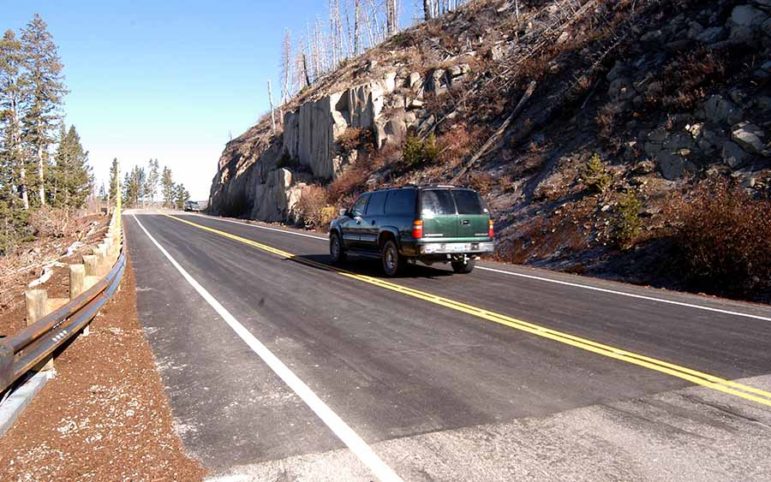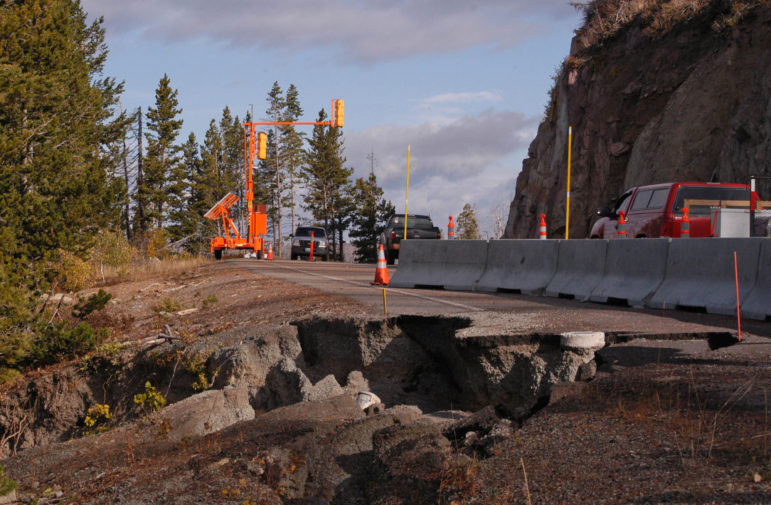
CODY, WYO. — Though Yellowstone National Park was closed to visitors during the government shutdown, contractors were able to continue working, allowing them to complete repairs to a damaged portion of the road between the park’s East Entrance and Fishing Bridge.
Part of the eastbound lane along a section of road known as “Nine Mile,” near Lake Butte Overlook and Sedge Bay, was washed away in May 2011, just days after the park’s East Entrance had opened for the summer season.
Travel at that spot had since been restricted to a single lane, with an automated traffic light controlling vehicle flows, typically resulting in brief delays of five minutes or less.
The $1.3 million repair job was awarded HK Contractors Inc. from Idaho Falls, Idaho, said Yellowstone spokesman Dan Hottle. Subcontractors included Hayward-Baker and Sletten Construction.

Hottle said the job was finished Oct. 11, six days ahead of schedule, and that work came in slightly under budget thanks to savings realized from value engineering.
Some business owners in the gateway community of Cody, Wyo. had expressed frustration over the wait of nearly 2 1/2 years for repairs to be completed, but most said the temporary single-lane solution had not diminished tourist traffic along the East Entrance Road.
Park officials have said that repairs were complex and that securing funding took considerable time. An initial round of bids came in over budget, further delaying the fix.
Scott Balyo, executive director of the Cody Country Chamber of Commerce, said disruptions during the repair work were minimal.
“It probably did take longer than anyone would have liked, but we never faced a road closure from it,” Balyo said. “Having a minute or two delay at the light was a minor inconvenience, and it appears they’ve done a great job on it.”
The road failed when saturated sub-surface soils slid along a section of bedrock angled toward Yellowstone Lake, Hottle said.
Water from spring precipitation and melting snow traveled between the bedrock and granular soils closer to the surface, hastening the road failure, he said.
Repairs required removing the unstable soil down to the bedrock and creating a flat bench to provide a firm base for the new road.
“A mechanically-stabilized earth wall system was constructed from the flat bench, up to the existing roadway elevation, approximately 45 feet at maximum depth,” Hottle said.
Contractors installed a new drainage system beneath the road to direct water away from the road surface and to the lake below.
The Federal Highway Administration installed a monitoring well and made other borings around the road in 2008 as part of a geotechnical investigation into previously existing problems with the road, Hottle said.
Data gathered from that process helped guide designs for the reconstructed road.
Contact Ruffin Prevost at 307-213-9818 or [email protected].
